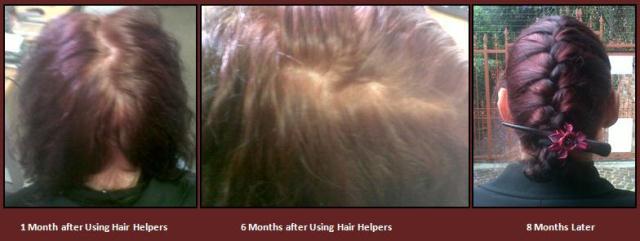1.
Healthy
living will result in healthy hair. Eat a healthy, well balanced diet; drink
plenty of water and avoid smoking.
2.
Massage your scalp regularly to stimulate oil
production and to reduce the dryness of your hair. Remember… African hair,
generally black hair, is the slowest growing of all ethnic groups, at less than
0.9 cm a month. It is also slightly more dense and grows almost parallel to the
scalp, twisting around itself as it grows but as in the case with ALL hair, the
follicle NEEDS nutrients and vitamins to produce healthy hair strands. African
hair also produces plenty of protective oils, called sebum. In fact, African
hair actually produces more oils than Caucasian and Asian hair. However, due to
the tight curls, the oil fails to spread evenly along the hair fibre.
3.
Therefore it is even more important for African
people to massage their scalp and get the oils spread evenly as much as possible
because without this very necessary lubrication, the fibres become very dry.
This causes the brittle strands to flake and roughen, resulting in hair that is
coarse to the touch.Do not shampoo every day. Ethnic hair is dryer than other
hair and if you wash it everyday the shampoo will strip away the natural oils
from your hair. Rather shampoo every 3 to 7 days instead.
4.
If you enjoy going to the gym or exercising
daily and you sweat, it is recommended that you rinse your hair out with water
and only use shampoo occasionally. However, if you want to use a shampoo every
day, use a moisturising one with a low PH level when washing your hair.
5.
Don't use a 2- in-1 shampoo and conditioner.
They are not suitable for very dry hair. Use a separate shampoo and
conditioner.
6.
When washing your hair, rub only in one
direction to avoid tangling.
7.
Hot water can dry and irritate the scalp, so
rather use warm water when showering or bathing.
8.
Massage oil into your scalp and brush out to the
ends of your hair, while your hair is still damp.
9.
Moisturize your hair with a conditioner when you
shower, to add shine and give it extra protection, as well as to reduce static
and untangle the hair.
10.
Use a leave-in conditioner to hydrate and
protect the hair. It also makes it easier to comb.
11.
Blot the water out of your hair, instead of
rubbing. Rubbing causes hair to tangle and break
12.
Limit your use of blow dryers, hot irons and
straighteners
13.
Use a pick or wide-toothed comb. It makes it
easier to comb if your hair is slightly moist, because it can slide easier
across the hair.
14.
If your hair is very wet, wait until it dries
more, hair is most fragile when it is wet.
15.
If you have a tough knot or tangle, use your
fingers to loosen it and then continue combing.
16.
Comb your hair to remove any tangles before
brushing it, using a brush to detangle your hair will stretch your hair and may
cause your hair to break off.
17.
Use a soft hairbrush on your hair daily which
will distribute the oil at the root of your hair and scalp to the rest of your
hair. Dampen the brush slightly before brushing.
18.
Get a hot oil treatment once a month to
deep-moisturize your scalp and hair.
19.
Satin or silk pillowcases are kinder to your
hair, because it can slide across it without getting caught. An alternative to
the silk pillowcase is to wear a silk or satin scarf over your hair before your
sleep to prevent breakage.
20.
Avoid hair products that contain alcohol which
dry out your hair.
21.
Use the Oleda Hair helper vitamins by Hair
Beauty - this product Feeds Hair
Follicles To Help Hair Grow and at last South Africans have a product that
besides being very affordable, truly works. For Men, Women - All Hair Types and
Colors - Light, Dark, Sun Damaged, Wind Damaged, even Over-Processed Hair!
Beautiful hair starts with FEEDING your hair from the INSIDE through the blood
stream. Lifeless, brittle, thinning hair is very often caused by poor
nutrition. Hair follicles (the roots) must have special nutrition in order to
have the best thickness, shine and strength you want.
And remember...the very best hair treatment
applied ON the hair strands themselves can never ever make up for FEEDING THE
HAIR PROPERLY FROM THE INSIDE through the blood vessels. We just can't eat
enough foods rich in vitamins and minerals for the kind of strength, thickness,
shine, vitality and growth we need for the most beautiful hair. The best way to
feed your hair and scalp - is through your mouth, as with the help of our
special HAIR HELPERS VITAMINS.

.jpg)
.jpg)


